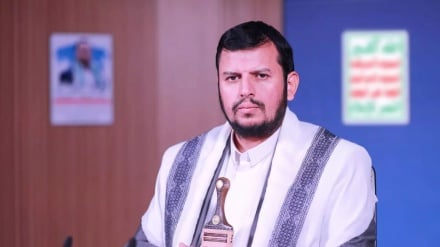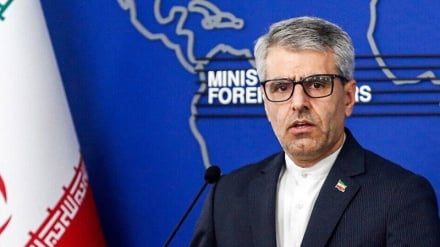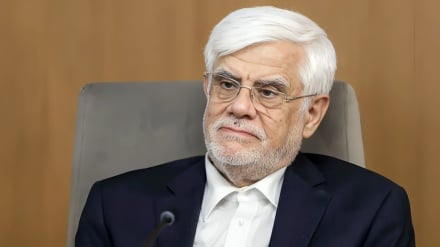Ansarallah: Revolutionaries Pegged as Religious Extremists
The Ansarallah enjoy wide support from the Yemeni people, and the popular movement can be more accurately described as a national liberation movement, and not religious or tribal extremists as alleged by their enemies, such as the West and its Arab clients, such as Saudi Arabia which for almost the past three years has subjected them to intense bombardment but without making a dent in their resolve.
The following is an article by journalist Rune Agerhus titled: “Ansarallah: Revolutionaries Pegged as Religious Extremists”.
Ever since the Ansarullah-led forces took over most of Yemen back in 2014, the western world has deliberately tried to paint the movement as either ‘Iranian-backed’ or a ‘rebel militia group’. Both claims are false and lack basis in fact. Western media outlets claim that Iran regularly smuggles weapons and rockets into Yemeni territory, and that the Ansarallah are dictated by Iran in all its actions. They also brand the Ansarullah movement as a terrorist organization, which is against the facts.
The movement’s founder and first leader, Seyyed Hussain Badreddin al-Houthi, created the “believing youth” movement back in the 1990’s in an effort to spread awareness about the corruption of the Ali Abdullah Saleh regime and its use of excessive force against the youth of the northern-Yemeni regions. At that time, Seyyed Hussain al-Houthi was an MP in the Yemeni parliament, sitting in opposition to the rule of dictator Saleh.
Saleh quickly got information about Seyyed Hussain al-Houthi’s political activities, and even went further to conspire against him, alleging that he received “funds from Iran” and accused him of trying to stir up violence. Saleh feared that this group, with strong roots in the Shi’a-Zaydi community, would take over Yemen and the country with the support of the people.
None of these claims were true, but Saleh, paranoid and frustrated, launched what would escalate into 6 total wars against the movement in the north from 2004 to 2009. All of these assaults were backed by the US and Saudi Arabia.
The Ansarullah Movement was, at its core, never violent nor was it armed. It started as a grassroots movement, dealing with everything from corruption to lack of women’s rights. It privately funded initiatives that would raise the quality of healthcare, schools, and infrastructure in the regions under their control, and people loved them for it. They were in every sense of the word - a popular movement.
But this was years ago. Seyyed Hussain was brutally murdered in a cave by Saleh-loyalist forces, and his brother, Seyyed Abdel Malek, would soon take over the role of leadership from his elder brother.
One of the primary goals of the movement from that point was to make an initiative that would effectively eradicate religious extremism. The Zaydi community had long felt marginalized and threatened by the expanding threat of extremism – a problem the Saudi-backed government had no interest in addressing. Yemen has long dealt with extremism in its country, mainly originating from Saudi Arabia. They saw the weak Yemeni leadership as an opportunity to seek shelter on its territory, primarily in the eastern parts of the country. Furthermore, with Mansour Hadi’s rise to power, the Islah Party (an al-Qaida affiliate) had the opportunity to shift focus from al-Qaida, enabling them to roam freely without resistance.
The Ansarallah were one of the main organizers that protested against President Saleh back in 2011, and they were also skeptical of the one-candidate election that would instate Mansour Hadi as president which the western media, including most notably famed columnist Thomas L. Friedman, called ‘democratic’.
So what happened that year? Why did they take Sana’a so quickly, and nearly without confrontation? The problem lies in a common worry that all Yemenis shared. Not only was Mansour Hadi better favored by Saudi authorities than Saleh, his government also enabled the Islah Party to gain way more influence in the government and the parliament. Something many, if not most, Yemenis feared would happen. This led to greater dissatisfaction with the new government, sparking even bigger protests than before. And the Ansarallah were yet again at the forefront in a position of massive popular support.
When discontent came to a head during the September 21st revolution of 2014, the Ansarallah revolutionaries swept in and took control of the government, nearly without confrontation from security forces. This was because many units inside the Yemeni army had sympathy towards the cause of the Ansarallah. They too were subject to the huge amount of corruption and lack of rights, and finally, there was a solution to these problems, which have plagued Yemeni society for decades. The Ansarallah reassured that they were proud Republicans, and that they would strive to improve the country on all aspects.
Of course, the overthrow of the Saudi-loyal government irritated the Saudi regime, and that’s what led to the current aggression we’re witnessing today.
What the Ansarullah movement has achieved, despite the false allegations against them and despite the aggression that has left thousands of civilians dead and injured as well as sparked a major cholera outbreak, should be praised. Amongst many things, extremism in the areas under their control is practically nonexistent. Al-Qaida has shrunk to nothingness, women’s rights have been improved, fewer cases of child brides, fewer cases of extremist preachers in mosques, fewer cases of violence and harassment against women, and so on. Their goal has always been to improve Yemen’s weak democratic system.
The United States, the UK, Israel, and the Saudi-led alliance might perceive them as being very hostile and unfriendly in their rhetoric. And rightly so. It’s a fact. But it’s not something the Ansarallah like to be. They are hostile towards above-mentioned regimes because they are tired of being exploited by them. They are tired of being economically exploited by the Saudis (who even went on to occupy and annex the richest regions of former Greater Yemen; Najran and Jizan), and they are tired of the western-aligned powers meddling in their internal affairs.
The Ansarallah have stressed countless of times that they are ready to negotiate relations, but only on the condition that the United States and the UK abolish their interventionist, expansionist policies, and that Saudi Arabia stops its bombardments and return back their rightful lands. The Ansarallah even try to be the first to condemn terrorism in western countries, and they do this unconditionally, as terrorism plagues Yemeni society as well, if not more. But until then, they will keep being hostile.
One could argue that the war in Yemen resembles conventional warfare more so than a civil war. The Ansarullah movement, backed by the wide majority of Yemenis, has a right to defend itself against aggression and exploitation. The Saudi-led coalition has failed immensely in their effort to combat the Ansarallah. What it has created for the Yemenis, is a nation more unified than ever before. People from all corners of the Yemeni society, from all sides of the political landscape, have gotten together on the frontline against the invading forces. And a unified nation is always harder to beat.
Despite the strong evidence from the ground in Yemen indicating that this war is much more a national struggle for self-determination than an assumed proxy conflict, the western media still continues to spew out its false allegations.
Self-sufficiency and self-determination are principles the new Yemeni leadership holds very dearly to its heart. Not to mention the current circumstances makes it practically impossible for Iran to deliver weapons and other armaments to Yemen. All the borders are completely sealed off and monitored by the Saudi-led aggression forces.
The current political climate in Yemen proves, and has proven for 2 years now, that the Ansarallah are by no means a “rebel group.” They are well organized, well trained, know how to negotiate, and know how to run a state with experience from the time when they governed the northern region of Sa’adah. The Ansarallah Movement now consists of practically most of the armed forces of Yemen, including the Naval Coast Guard, Republican Guard and air force. The Ansarullah movement is a grassroots movement based on national liberation and is deeply embedded in the hearts and souls of the people.
AS/MG


